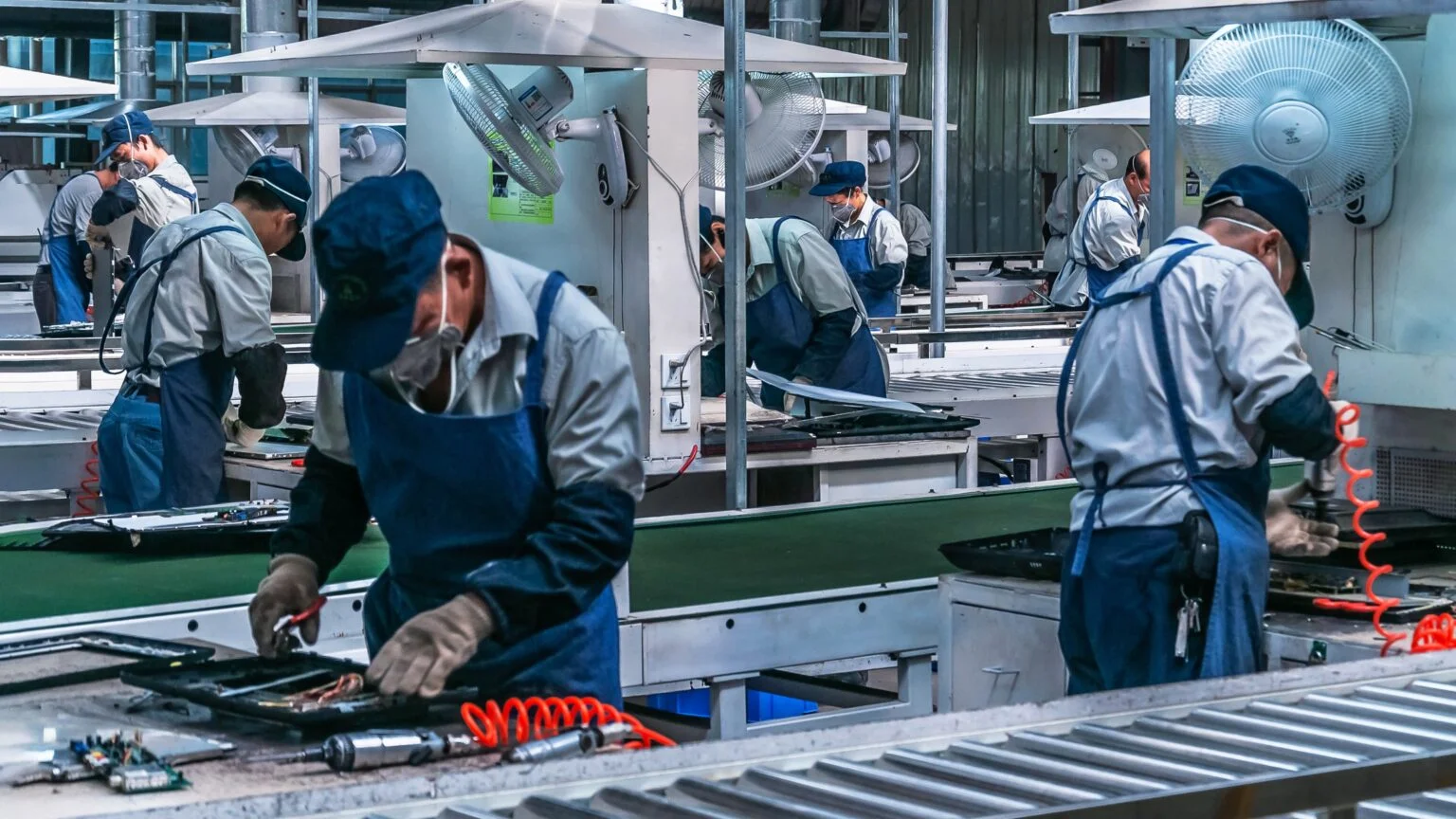Today, a burning question is at the heart of nearly every executive strategy meeting: how can we effectively integrate artificial intelligence into the enterprise ?

Whether it’s to improve production processes, boost commercial strategies, or optimize internal support functions, the objective is clear: enhance operational efficiency and competitiveness. In this race to integrate AI, some business leaders are deploying significant resources and turning to top consulting firms, yet they sometimes risk making costly or misaligned decisions. And yet, one smart approach is to look to the past to better anticipate the future.

That’s exactly what we propose in this article: to look back at the rise of Digital Factories. Emerging in the late 2010s across nearly all CAC 40 companies and several mid-sized firms, they offer a valuable precedent to examine. Seven to eight years after their creation, it’s time to draw lessons, identify their limitations, and ask whether this model could inspire the shift toward AI. In other words, should we be building AI Factories ?
Why did Digital Factories come into being ?
In the 2010s, large corporations quickly realized that technology had become a vital strategic imperative, especially following Tesla’s spectacular arrival in the automotive industry. Innovation was no longer optional; it had become an urgent necessity to avoid falling behind.
Digital Factories were created in direct response to this urgency, bringing together a wide range of talent: developers, UX designers, data scientists, and strategy experts, often recruited from outside the company. Backed by top consulting firms like BCG or McKinsey, these cross-functional teams were designed to generate innovative ideas that could be rapidly implemented to maintain competitiveness.

👉 A symbolic turning point: In just a few years, Tesla redefined the standards of the industry, not only through electric powertrains, but above all through its deeply embedded tech DNA.

How did Digital Factories operate ?
Digital Factories were centralized, cross-functional teams that operated much like an internal strategy consultancy within the company. Their primary role was to engage with business stakeholders across the organization to identify, or surface innovative use cases using proven methodologies such as Open Innovation or Design Thinking.
These teams also had their own investment capacity. For example, as noted by the former Managing Director of Renault Digital, the group’s Digital Factory initially had a centralized corporate budget specifically dedicated to funding innovative technology projects. While these projects had to be aligned with corporate strategy and approved by top management, the teams enjoyed real financial and operational autonomy to fast-track execution.

Why bypass the traditional IT department ?
Faced with the growing need for agility and innovation, the traditional IT department was not the obvious choice for executives. Often seen as a function focused on technical support and cost control and somewhat disconnected from the operational realities of business teams it appeared ill-suited to take on a driving role in digital transformation.
Digital Factories, by contrast, were perceived as dynamic structures capable of quickly identifying innovative and potentially profitable technological opportunities, all while staying closely aligned with the actual needs of the business.
What’s the legacy of Digital Factories ?

Digital Factories brought greater speed, efficiency, and above all a stronger tech culture within organizations. The widespread adoption of cloud technologies and the growing awareness among leadership teams of the importance of data and AI are undeniable successes.
However, the experience was not without its flaws. The high cost of recruiting external talent and the heavy reliance on top-tier consultants limited short-term profitability.
That said, the cultural impact remains undeniable. Today, it’s nearly unthinkable for any executive to overlook the strategic importance of technology.
How are Digital Factories evolving today ?
In today’s tighter economic climate, Digital Factories are gradually being reintegrated into IT departments, resulting in reduced scope and smaller budgets. Business units now play a more active role in identifying technological opportunities, often conducting their own strategic watch. The role of Digital Factories and IT teams is increasingly focused on the industrialization of the solutions identified.
At the same time, the tech talent market is adjusting to this new economic reality. Salaries for previously in-demand roles, such as developers, data scientists, and data engineers are beginning to decline accordingly.
Riding the AI Wave : Hubadviser’s stance
At Hubadviser, we take a clear position: the best way to adopt artificial intelligence in a company is through decentralization, not by concentrating the topic in the hands of a few experts.
Why ? Because the desire is already there. In most organizations, employees are curious, motivated, sometimes even excited about the idea of using AI.
It’s the business teams themselves who are best positioned to identify concrete use cases, where AI can truly create value. That is, of course, provided they’re given the freedom to try, test, and experiment.


On the other hand, putting AI entirely in the hands of a single, centralized team responsible for validating and overseeing everything often ends up stifling initiatives. As salam Aleykoum Wa rahmatuLlahi Wa baarakatouh skilled as these teams may be, they’re usually too far removed from day-to-day operations to know exactly where AI can make a real difference.
This marks a major shift from the era of Digital Factories. Back then, it was still necessary to convince, evangelize, and explain. But AI, and the impact of COVID, have changed the game. Today, demand is coming directly from the field. The role now is to support, not control.
For us, this doesn’t mean there’s no longer a need for a central team. On the contrary.
But its role must evolve: no longer to drive the transformation, but to support it intelligently, along two essential dimensions :
- Regulatory framework : multidisciplinary teams capable of understanding both the technology and the legal requirements (such as the AI Act or GDPR).
- Technology framework : ensuring that architectural choices (private cloud, internal data centers, public cloud, etc.) enable secure, sovereign, and compliant use of data.
It is up to this central team to lay the foundations:
- protect data,
- ensure compliance,
- support businesses in their experiments.
But it is up to the professions to bring out use cases, to explore, to create.
Some companies have already understood this, like Mirakl, which has encouraged all its employees to use AI on a daily basis.
Each week, they share their feedback with their managers: what works, what doesn’t, and what adds value. It’s a simple, effective, and, above all, practical approach.
Unleashing AI to better understand how it can transform business. This is the vision we carry at Hubadviser.

About the author

Ismail has 15 years of experience in IT and digital consulting. He spent nearly 7 years at Gartner. He has supported innovative startups in their growth strategy and worked with CIOs of large groups on their digital transformation. In 2021, Ismail founded Hubadviser to help CIOs challenge their vision with top-level experts.

